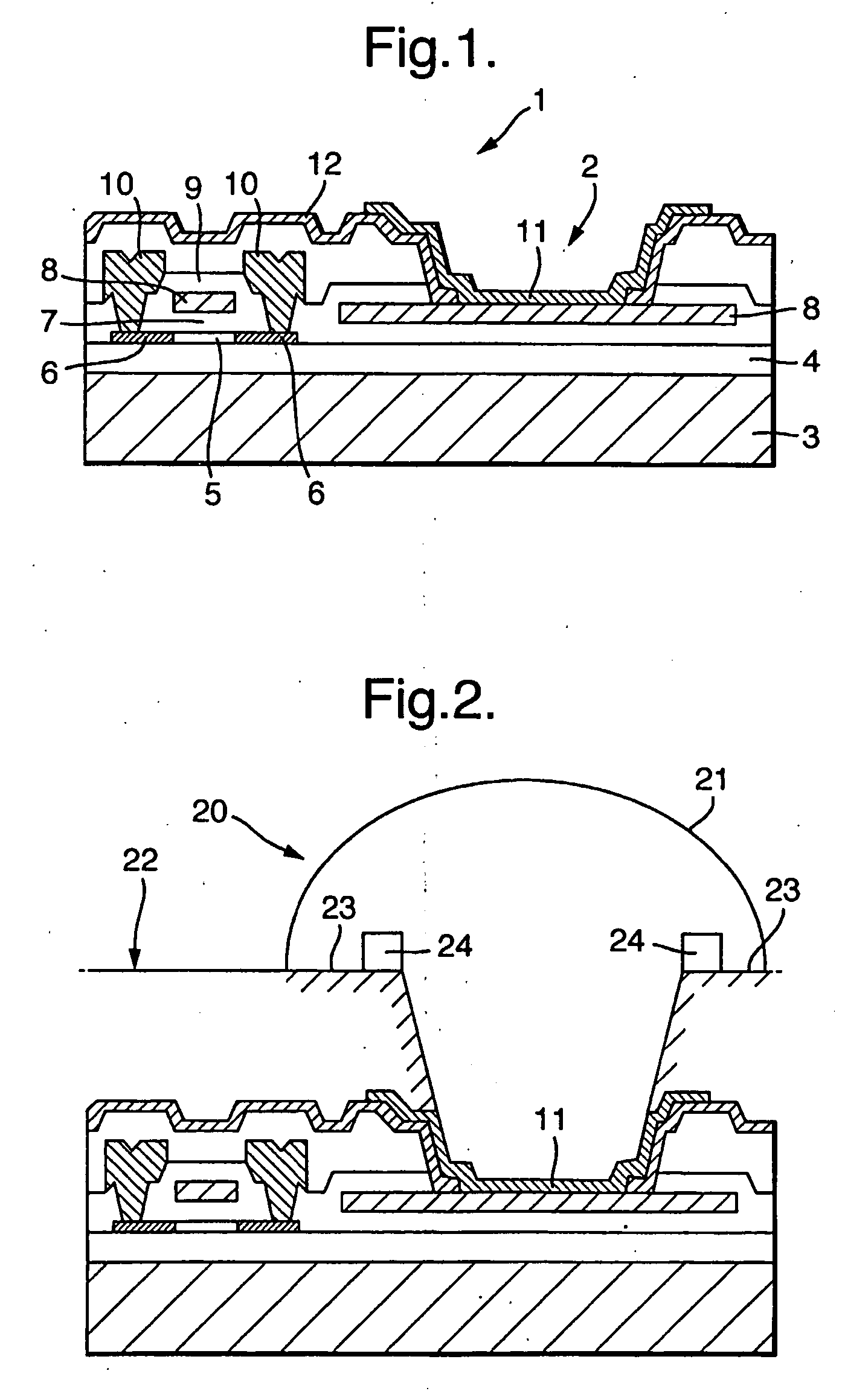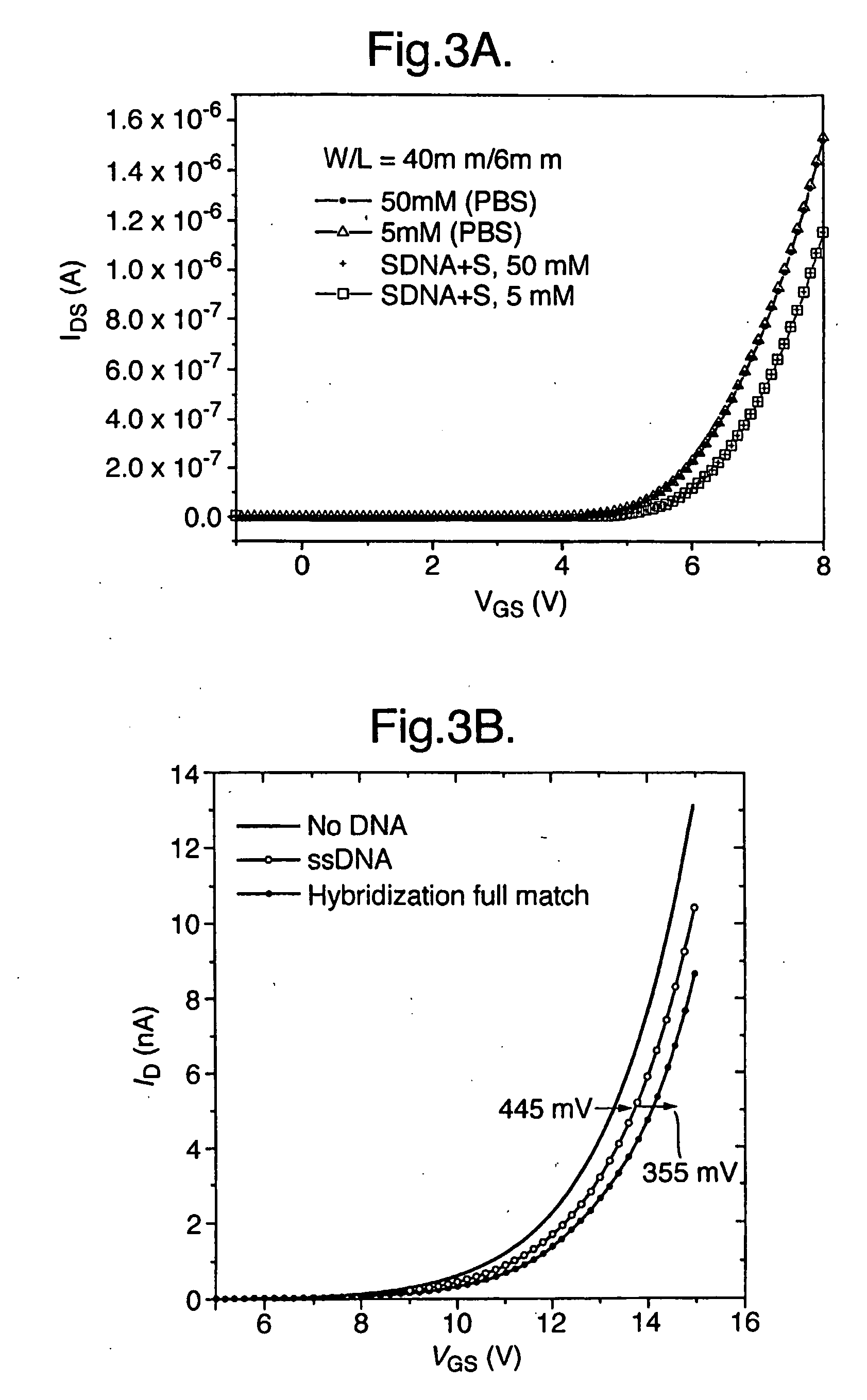Detection of molecular interactions using a field effect transistor
a field effect transistor and molecular interaction technology, applied in the field of hybridization of dna, can solve the problems of adsorption of hydrogen or other ions, hydration or even superficial migration of ions at the surface of the gate dielectric, and high cost of methods and difficult implementation in portable instruments
- Summary
- Abstract
- Description
- Claims
- Application Information
AI Technical Summary
Benefits of technology
Problems solved by technology
Method used
Image
Examples
Embodiment Construction
[0046] The present invention is directed to the detection of a chemical, biochemical or biological interaction which results in a change of the electric potential distribution at the interface between the functionalized metal gate of a Field Effect Transistor (FET) and an electrolyte. In contrast to the conventional bipolar transistor, the FET transistor consisting of a source, gate, and drain, the action of which depends on the flow of majority carriers past the gate from the source to the drain. The flow is controlled by the transverse electric field under the gate. A metal-insulator-semiconductor type FET (MISFET) is preferred due to superior performance as compared to other types of FET. There are also many varieties of MISFET that are suitable for the purpose of detecting molecular interactions by means of a functionalized gate according to the present invention. One such class is the thin-film transistor (TFT), which itself has many variants, including the single crystal or si...
PUM
| Property | Measurement | Unit |
|---|---|---|
| voltage | aaaaa | aaaaa |
| threshold gate-source voltage | aaaaa | aaaaa |
| drain current | aaaaa | aaaaa |
Abstract
Description
Claims
Application Information
 Login to View More
Login to View More - R&D
- Intellectual Property
- Life Sciences
- Materials
- Tech Scout
- Unparalleled Data Quality
- Higher Quality Content
- 60% Fewer Hallucinations
Browse by: Latest US Patents, China's latest patents, Technical Efficacy Thesaurus, Application Domain, Technology Topic, Popular Technical Reports.
© 2025 PatSnap. All rights reserved.Legal|Privacy policy|Modern Slavery Act Transparency Statement|Sitemap|About US| Contact US: help@patsnap.com



